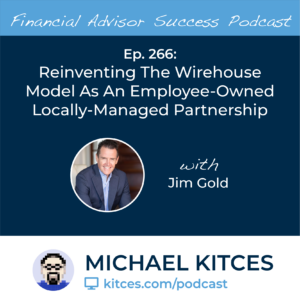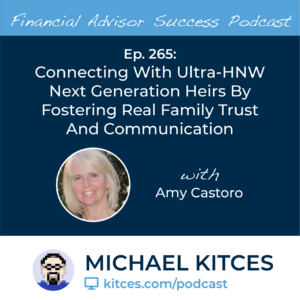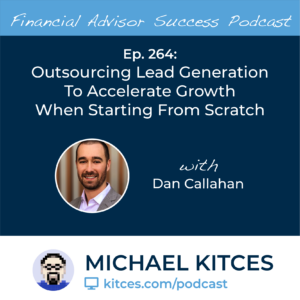 Welcome back to the 266th episode of the Financial Advisor Success Podcast!
Welcome back to the 266th episode of the Financial Advisor Success Podcast!
My guest on today's podcast is Jim Gold. Jim is the CEO and Co-founder of Steward Partners Global Advisory, an independent advisory firm that supports nearly 180 financial advisors managing more than $16B of assets under management and serving close to 10,000 client households in multiple locations around the country.
What’s unique about Jim, though, is how he and his firm are attempting to re-create the wirehouse model of old, by offering locally-managed ‘large firm’ infrastructure to financial advisors but utilizing an employee-owner partnership model to provide all the benefits of independence.
In this episode, we talk in depth about how Jim and Steward Partners offer financial advisors the wirehouse framework of access to proprietary investment products, research, and technology, but without the constraints of large firm compliance and the conflicts of a parent firm trying to manage its own risk over its clients, how the firm leverages its partnership equity plan to give a wide base of employees a stake in the company and its culture, and how the firm’s foundation is built to grant flexibility to advisors, allowing them to affiliate as W2 or 1099 employees and to still take their book of business with them if they ever decide to leave.
We also talk about how Jim’s firsthand experience as a complex manager of a major wirehouse helped him realize how the national wirehouses were evolving from a connection-focused support system into more impersonal and overly systematized corporation, how the benefits advisors gained from associating with the wirehouse were becoming increasingly outweighed by a lack of growth opportunities and an excess of damage control from corporate scandals, and how these realizations inspired Jim to build his own firm based on a partnership model akin to the true Wall Street and Big-8 accounting firm partnerships of old.
And be certain to listen to the end, where Jim shares how he has found delight in creating a business model that gives advisors opportunities to go beyond large firm red tape, the challenges that Jim faced in spending down his personal assets and mortgaging his house to build the firm he dreamt of, and how Jim believes having a clear vision, confidence, and motivation to push past unforeseen challenges is what leads to better, more fulfilling accomplishments.
So whether you’re interested in learning about how Jim and Steward Partners built an advisory firm with the benefits of a wirehouse without intrusive large firm compliance and risk management, how Jim has created a true partnership culture for financial advisors, or how he follows inspiration to create the opportunities he wants to see in the world, then we hope you enjoy this episode of the Financial Advisor Success podcast, with Jim Gold.

 Welcome back to the 265th episode of the Financial Advisor Success Podcast!
Welcome back to the 265th episode of the Financial Advisor Success Podcast! Welcome back to the 264th episode of the Financial Advisor Success Podcast!
Welcome back to the 264th episode of the Financial Advisor Success Podcast!
